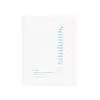What's inside
What's inside
 Key Ingredients
Key Ingredients

 Benefits
Benefits

 Concerns
Concerns

No concerns
 Ingredients Side-by-side
Ingredients Side-by-side

Water
Skin ConditioningDipropylene Glycol
HumectantCaprylic/Capric Triglyceride
MaskingGlycerin
HumectantMethylpropanediol
SolventSorbitan Stearate
EmulsifyingButylene Glycol
Humectant1,2-Hexanediol
Skin ConditioningSorbitan Sesquioleate
EmulsifyingArginine
MaskingAcrylates/C10-30 Alkyl Acrylate Crosspolymer
Emulsion StabilisingHydroxyethylcellulose
Emulsion StabilisingSucrose Cocoate
EmulsifyingGlycyrrhiza Glabra Root Extract
BleachingCamellia Sinensis Leaf Extract
AntimicrobialZingiber Officinale Root Extract
MaskingCoptis Chinensis Root Extract
AntioxidantAdenosine
Skin ConditioningDehydroacetic Acid
PreservativeDipotassium Glycyrrhizate
HumectantDisodium EDTA
Boswellia Serrata Gum
MaskingSodium Hyaluronate
HumectantHydrogenated Lecithin
EmulsifyingLimonene
PerfumingHydrolyzed Collagen
EmollientCentella Asiatica Extract
CleansingCeramide NP
Skin ConditioningPhytosteryl/Octyldodecyl Lauroyl Glutamate
Skin ConditioningGeranium Maculatum Oil
MaskingMelaleuca Alternifolia Leaf Oil
AntioxidantRosmarinus Officinalis Leaf Oil
MaskingCitrus Limon Fruit Extract
MaskingCitrus Paradisi Peel Oil
MaskingWater, Dipropylene Glycol, Caprylic/Capric Triglyceride, Glycerin, Methylpropanediol, Sorbitan Stearate, Butylene Glycol, 1,2-Hexanediol, Sorbitan Sesquioleate, Arginine, Acrylates/C10-30 Alkyl Acrylate Crosspolymer, Hydroxyethylcellulose, Sucrose Cocoate, Glycyrrhiza Glabra Root Extract, Camellia Sinensis Leaf Extract, Zingiber Officinale Root Extract, Coptis Chinensis Root Extract, Adenosine, Dehydroacetic Acid, Dipotassium Glycyrrhizate, Disodium EDTA, Boswellia Serrata Gum, Sodium Hyaluronate, Hydrogenated Lecithin, Limonene, Hydrolyzed Collagen, Centella Asiatica Extract, Ceramide NP, Phytosteryl/Octyldodecyl Lauroyl Glutamate, Geranium Maculatum Oil, Melaleuca Alternifolia Leaf Oil, Rosmarinus Officinalis Leaf Oil, Citrus Limon Fruit Extract, Citrus Paradisi Peel Oil
Water
Skin ConditioningDipropylene Glycol
Humectant1,2-Hexanediol
Skin ConditioningPanthenol
Skin ConditioningMadecassoside
AntioxidantCentella Asiatica Leaf Extract
Skin ConditioningCarbomer
Emulsion StabilisingPolyglyceryl-10 Laurate
Skin ConditioningGlycerin
HumectantPolyglyceryl-10 Myristate
Skin ConditioningAllantoin
Skin ConditioningArginine
MaskingTrehalose
HumectantEthylhexylglycerin
Skin ConditioningDisodium EDTA
 Reviews
Reviews

Ingredients Explained
These ingredients are found in both products.
Ingredients higher up in an ingredient list are typically present in a larger amount.
1,2-Hexanediol is a synthetic liquid and another multi-functional powerhouse.
It is a:
- Humectant, drawing moisture into the skin
- Emollient, helping to soften skin
- Solvent, dispersing and stabilizing formulas
- Preservative booster, enhancing the antimicrobial activity of other preservatives
Arginine is an amino acid that is important for human development. Your body uses is it to produce hair keratin and skin collagen.
As a cosmetic ingredient, Arginine has antioxidant properties and can also help repair damaged skin. This ingredient is derived either synthetically or from animals.
Arginine isn't fungal acne safe when used in the presence of other lipids (fats, fatty acids, oils, esters, etc). Oils and fats occur naturally within the skin, so take caution when using Arginine if you're prone to fungal acne.
Learn more about ArginineDipropylene Glycol is a synthetically created humectant, stabilizer, and solvent.
This ingredient helps:
Dipropylene glycol is technically an alcohol, but it belongs to the glycol family (often considered part of the ‘good’ alcohols). This means it is hydrating and gentle on skin unlike drying solvent alcohols like denatured alcohol.
As a masking agent, Dipropylene Glycol can be used to cover the smell of other ingredients. However, it does not have a scent.
Studies show Dipropylene Glycol is considered safe to use in skincare.
Learn more about Dipropylene GlycolDisodium EDTA plays a role in making products more stable by aiding other preservatives.
It is a chelating agent, meaning it neutralizes metal ions that may be found in a product.
Disodium EDTA is a salt of edetic acid and is found to be safe in cosmetic ingredients.
Learn more about Disodium EDTAGlycerin is already naturally found in your skin. It helps moisturize and protect your skin.
A study from 2016 found glycerin to be more effective as a humectant than AHAs and hyaluronic acid.
As a humectant, it helps the skin stay hydrated by pulling moisture to your skin. The low molecular weight of glycerin allows it to pull moisture into the deeper layers of your skin.
Hydrated skin improves your skin barrier; Your skin barrier helps protect against irritants and bacteria.
Glycerin has also been found to have antimicrobial and antiviral properties. Due to these properties, glycerin is often used in wound and burn treatments.
In cosmetics, glycerin is usually derived from plants such as soybean or palm. However, it can also be sourced from animals, such as tallow or animal fat.
This ingredient is organic, colorless, odorless, and non-toxic.
Glycerin is the name for this ingredient in American English. British English uses Glycerol/Glycerine.
Learn more about GlycerinWater. It's the most common cosmetic ingredient of all. You'll usually see it at the top of ingredient lists, meaning that it makes up the largest part of the product.
So why is it so popular? Water most often acts as a solvent - this means that it helps dissolve other ingredients into the formulation.
You'll also recognize water as that liquid we all need to stay alive. If you see this, drink a glass of water. Stay hydrated!
Learn more about Water